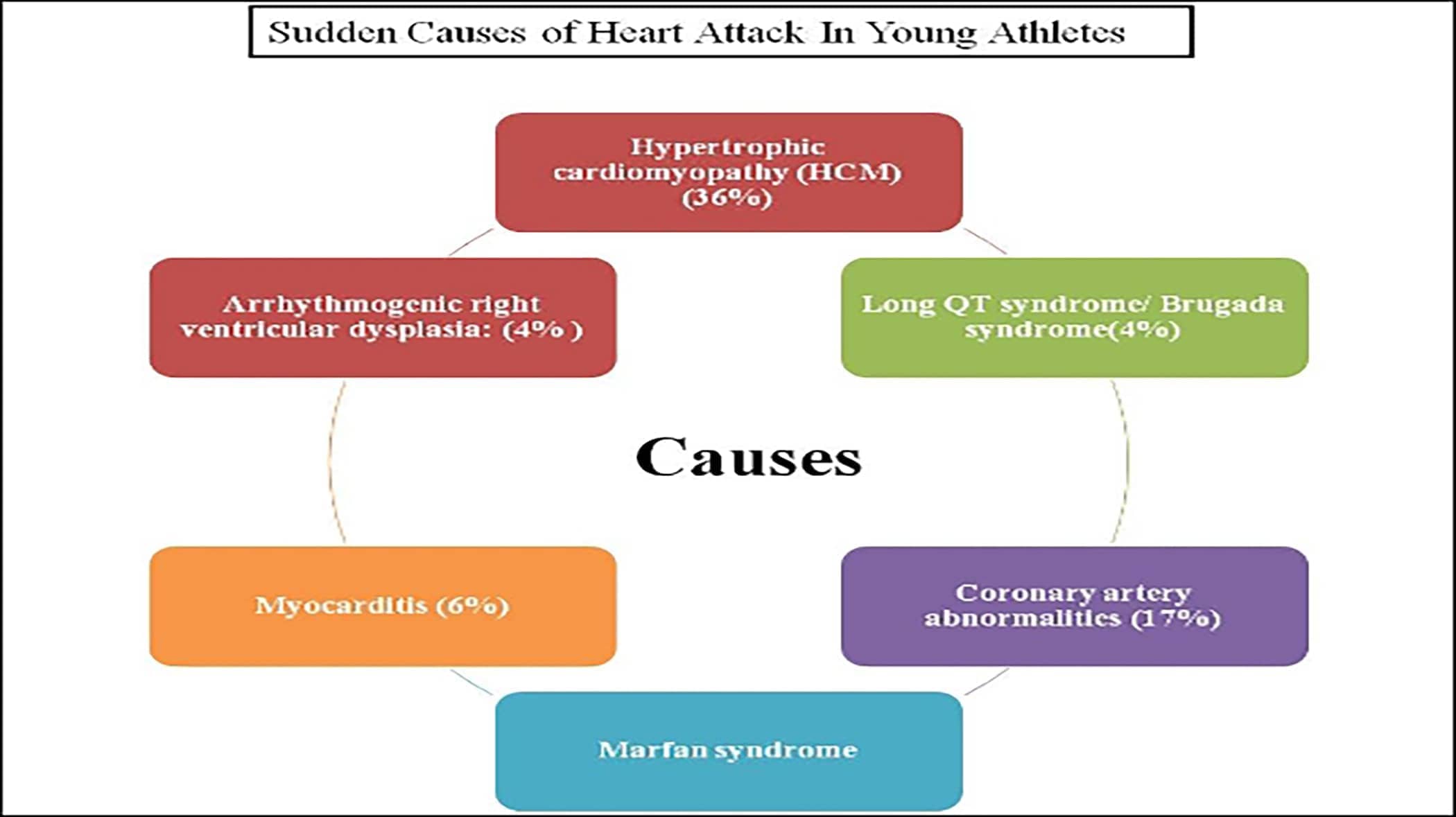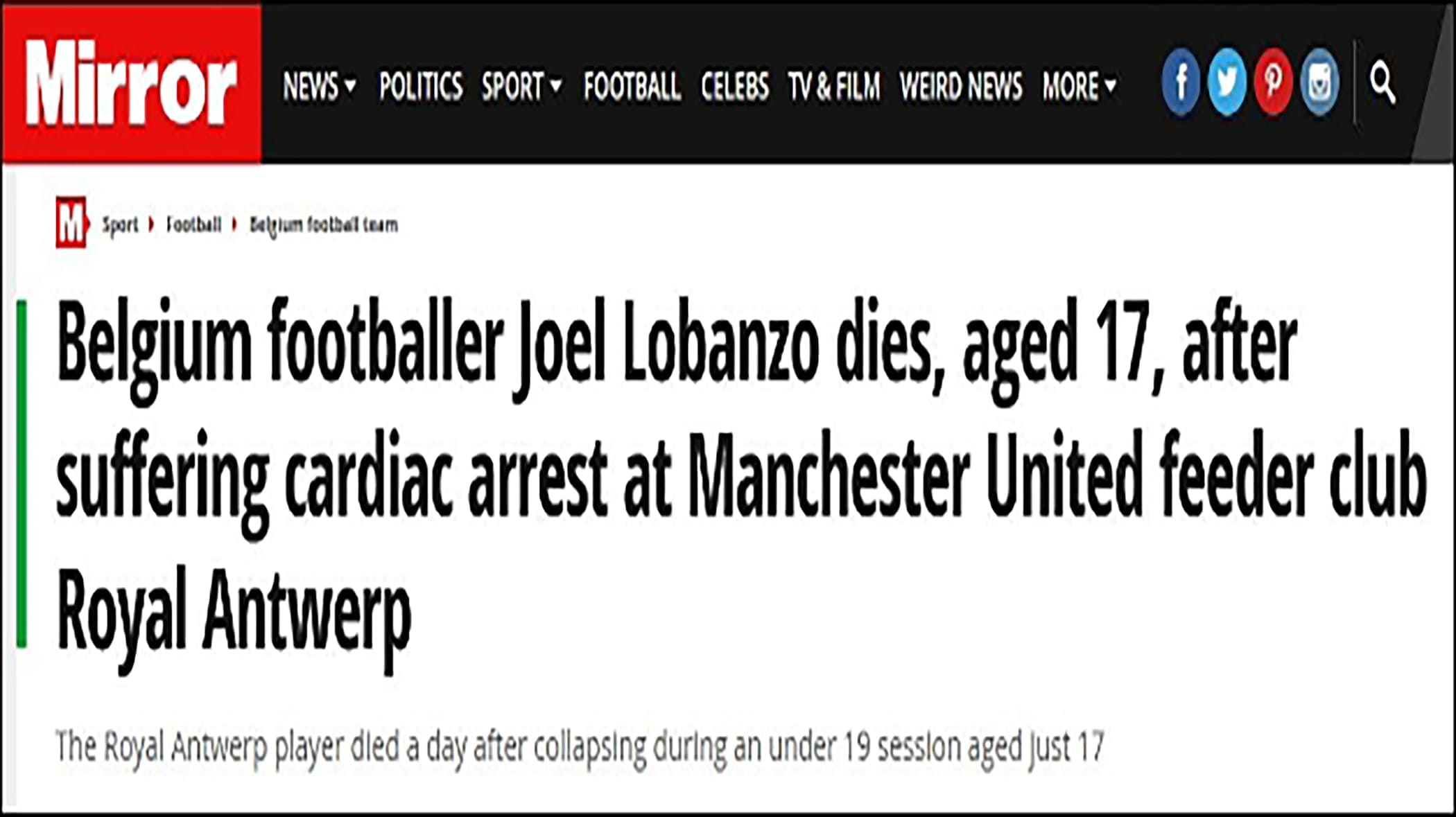A young 17-year footballer Joel Lobanzo died of sudden heart attack during the training session. Immediately after the massive attack medical supervisors tried resuscitation measures but were ineffective. The young athlete remained in critical condition for a day and died later. Joel Lobnazo played for Royal Antwerp a popular football club in Belgium.
A professional physically sound athlete is not supposed to be categorized as risk bearing individual for sudden cardiac arrest. But this is a case and research suggests that sudden cardiac death kills 1 in 100,000 to 1 in 300,000 athletes under age 35, more often males.
Such tragedies question the reasons for causing such mishaps in young healthy individuals without prior history or risk factors for complications. Experts reveal that sudden heart attacks have many reasons which can be prevented if they are identified on time. Catching the problem at a proper time reduces the severe loss of lives. Therefore, it is essential to have health checkups that rationally evaluate the nature of lifestyle and risk factors involved.
In case of athlete routine electrocardiogram (EKG) or echocardiogram (ultrasound evaluation of the heart) is essential. The use of these tests to screen athletes prior to participation is controversial as many institutes consider that it bears a significant cost. Also, the effectiveness of such tests is questioned, and many believe that such screening tests are costly and time-consuming factors in selection procedures. Many athletes consider the risk of being left out due to such tests which increases the fear and apathy towards health screening. The notion that such tests are not useful arises due to lack of knowledge and many a times even though the tests are done the physicians are unable to identify the risk which incites such beliefs. Medical experts are of opinion that mere diagnostic tests are incapable of estimating the risk associated with such sudden mishaps. Therefore it is essential to formulate a multifactorial approach to evaluate the health risk.
The assessment parameters for athletes are still a matter of debate. Many institutions have strict measures to screen for inherited diseases, congenital abnormalities and various stress tests are conducted. The physical exam includes a check for heart murmurs, pulses, blood pressure, and physical signs of the Marfan syndrome. But still such evaluations remain ineffective and tragedies struck causing loss of lives.
Analyzing many factors, correlating with an individual and predicting the risk is just like finding a needle in a haystack. Individual doctors are inefficient to handle health data of a number of athletes, analyze a number of factors simultaneously and provide customized precise predictive risk report.
Owing to such scenarios in health sector there is a need for solutions that effectively calculates risks and generates health risk predictions along with customized solution depending on the lifestyle requirement. At Techniche Imunita medico- engineering experts after insightful research have developed ‘ANAMAY’. It is an innovative solution that provides laboratory tests, diagnostic tests, and workplace assessment. They consider hereditary factors and many other factors before calculating the health risk involved with the help of specifically designed software (Ayuneeti). Precise health risk calculation and customized treatment decrease the sudden eruption of life-threatening diseases.
e-Sanakalan is one such state-of-art HMS designed for clinics and hospitals to digitalize their workflow and maintain NABH accreditation standards all year round. To see how e-Sankalan can transform your clinical management process, request a free demo today.





